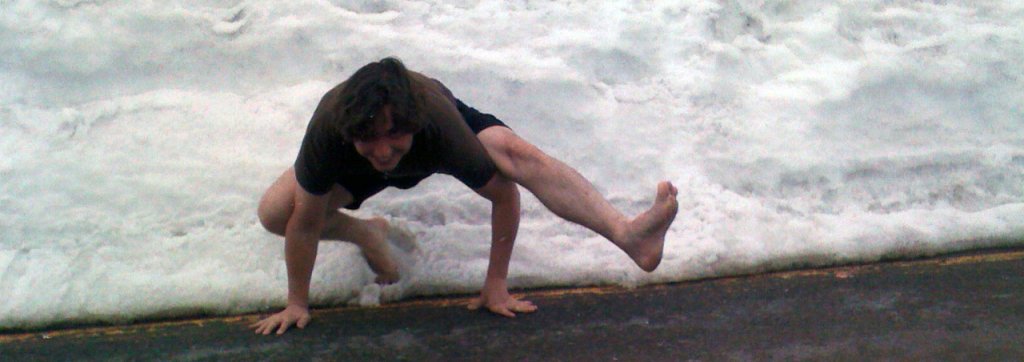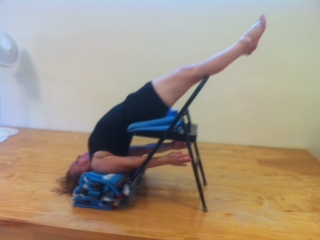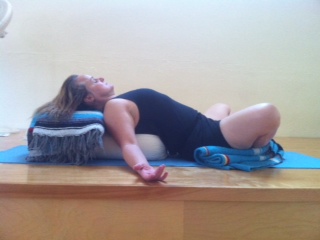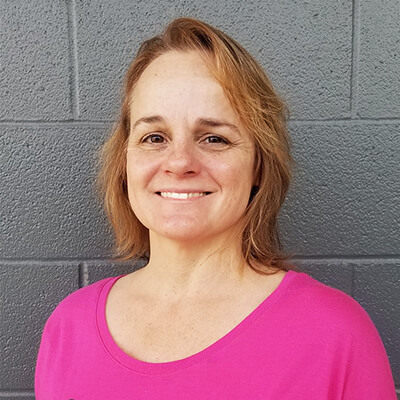
How Your Yoga Practice Can Help You Deal with the Heat of Texas Summers
I was quite keen to write about this aspect of yoga practice. Then, I forgot all about it because I’ve been in Ann Arbor, Michigan, studying yoga with Senior Iyengar teacher, Laurie Blakeney. She has a lovely studio, The Ann Arbor School of Yoga. We have been here over two weeks. Generally, the temperature has hovered in the 70s (°F). However, since my return to Texas and all the great yogis and yoginis at the Castle looms large, I wanted to write down, a few thoughts about yoga in the heat of 100°F degree day after 100°F degree day.
First, it is important to keep up our daily practice in hot months. We need the mental and physical stamina that yoga practice provides. Yoga practice is ultimately aimed at helping us become unaffected by dualities, such as heat and cold. Patanjali describes yoga asana as:
Perfect firmness of body, steadiness of intelligence and benevolence of spirit, this is Yoga Sutra, 2.46. He goes onto say, Perfection in an asana is achieved when the effort to perform it becomes effortless and the infinite being within is reached, this is Yoga Sutra 2.47. At that point, the sadhaka is undisturbed by dualities, copied from Yoga Sutra 2.48. (BKS Iyengar, Light on the Yoga Sutra’s of Patanjali)
Simply put, the calmness of mind, and more importantly, the awareness of the true self, that comes from good practice combats the stress that arises from being hot all the time, along with all the other stresses and strains of daily life. We see those fluctuations as impermanent distractions, as we start to take our bearings from a deeper sense of reality that yoga practice offers us.
Second, we want to practice in such a way that generates useful heat and that does not leave us depleted, as we leave the artificial coolness of the yoga studio and go back out into the elements of the natural world.


From the Iyengar yoga perspective, it is important to incorporate cooling poses like Baddha Konasana, Upavistha Konasana, Supta BaddhaKonasana, Supta Sukhasana, Setu Bandha, Viparita Karani and Salamba Sarvangasana into practice. Supported Sarvangasana is particularly helpful for the hot months. You can stay in this cooling pose much longer with the support of a chair.
Sirsasana is a heating pose. Do keep up your sirsasana practice, but be sure to balance it with longer stays in sarvangasana. Similarly, standing poses are heat-generating poses. We need them to develop strength and stamina and determination, but consider doing some of your standing pose practice with the support of ropes or a simple wall. Chairs can also help enhance a supported standing pose practice.
Third, pranayama is also particularly important during hot weather. Pranayamas that emphasize exhalations are more cooling than those that emphasize inhalations. Pranayamas like Ujjayi 2 and Viloma 2 are accessible to even the beginning level student. Ujjayi 6 and Viloma 4 are good pranayamas for those who have an established seated pranayama practice. Digital pranayamas, particularly Anuloma and Chandra Bhedna are very cooling. Nadi Sodhana also helps keep the mind cool and is one of the best pranayamas for soothing the nerves. The pranayama most known for its cooling effects is Sitali. These are advanced pranayamas so be sure to learn them from a qualified teacher. B.K.S. Iyengar’s Light on Pranayama is a great resource for detailed descriptions of each pranayama, but there is no substitute for the expert guidance of a teacher. (An alt resource is the Hatha Yoga Pradipika.)
Ujjayi 2 is a supine pranayama where you prolong the exhalation.
Violma 2 is a supine pranayama where you divide the exhalation into sections with a slight pause after each exhalation.
Ujjayi 6 is a seated pranayama where you prolong the exhalation.
Viloma 4 pranayama where you divide the exhalation into sections with a slight pause after each exhalation.
Anuloma is a seated digital pranayama where one nostril is fully closed and the other partially closed on the exhalation.
Nadi Shodana is seated digital pranayama where you alternate closing nostrils with the inhalation and exhalation.
Sitali is a seated pranayama where you draw in breathe through your folded tongue.
Want to learn more about pranayama? Come to classes with me at the Castle. I structure my classes quite intentionally with an eye toward helping you develop a pranayama practice. Not available in the mornings, not to worry. I plan to teach a pranayama workshop at the Castle in the near future.
Here are a few websites that discuss yoga practice in hot weather. Most are written from an eclectic yoga perspective.
- Cooling Yoga Poses for Hot Weather, Yen Yoga Blog July 22, 2011
- How to Do Yoga When It’s So Darn Hot, Posted by Sophie Herbert, July 12, 2011
Finally, for a justification of hot yoga in hot weather, read: Think Hot Yoga’s only for Cold Weather? Think Again! San Rafael Bikram Yoga, Copyright 2013
 Anne-Marie Schultz is a Certified Iyengar Yoga Instructor. She has practiced yoga since 1994 and taught yoga since 1997. She studies locally with Devon Dederich and Peggy Kelley. Anne-Marie regularly attends workshops and teacher training sessions with senior instructors in the Iyengar tradition. She studies most closely with Laurie Blakeney, Patricia Walden, Eddy Marks, Mary Obendorfer, and George Purvis. In 2007, she spent a month studying at the Iyengar Institute in Pune, India. Anne-Marie also has a PhD in Philosophy and directs the Baylor Interdisciplinary Core at Baylor University.
Anne-Marie Schultz is a Certified Iyengar Yoga Instructor. She has practiced yoga since 1994 and taught yoga since 1997. She studies locally with Devon Dederich and Peggy Kelley. Anne-Marie regularly attends workshops and teacher training sessions with senior instructors in the Iyengar tradition. She studies most closely with Laurie Blakeney, Patricia Walden, Eddy Marks, Mary Obendorfer, and George Purvis. In 2007, she spent a month studying at the Iyengar Institute in Pune, India. Anne-Marie also has a PhD in Philosophy and directs the Baylor Interdisciplinary Core at Baylor University.
Previous Blog Post: What is Iyengar Yoga?
Thank you Anne for writing this blog! Very helpful information that can really improve the quality of folks practice during these summer months!!